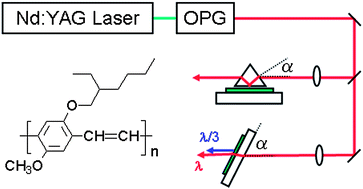Slab waveguides of poly(p-phenylenevinylene)s for all-optical switching: impact of side-chain substitution†
Abstract
We have prepared thin film waveguides by

- This article is part of the themed collection: Organic nonlinear optics
* Corresponding authors
a Max Planck Institute for Polymer Research, Ackermannweg 10, 55128 Mainz, Germany
b Institute for Organic Chemistry and Macromolecular Chemistry, University of Jena, Humboldtstr. 10, 07743 Jena, Germany
We have prepared thin film waveguides by

 Please wait while we load your content...
Something went wrong. Try again?
Please wait while we load your content...
Something went wrong. Try again?
A. Bahtiar, K. Koynov, Y. Mardiyati, H. Hörhold and C. Bubeck, J. Mater. Chem., 2009, 19, 7490 DOI: 10.1039/B908033C
To request permission to reproduce material from this article, please go to the Copyright Clearance Center request page.
If you are an author contributing to an RSC publication, you do not need to request permission provided correct acknowledgement is given.
If you are the author of this article, you do not need to request permission to reproduce figures and diagrams provided correct acknowledgement is given. If you want to reproduce the whole article in a third-party publication (excluding your thesis/dissertation for which permission is not required) please go to the Copyright Clearance Center request page.
Read more about how to correctly acknowledge RSC content.
 Fetching data from CrossRef.
Fetching data from CrossRef.
This may take some time to load.
Loading related content
